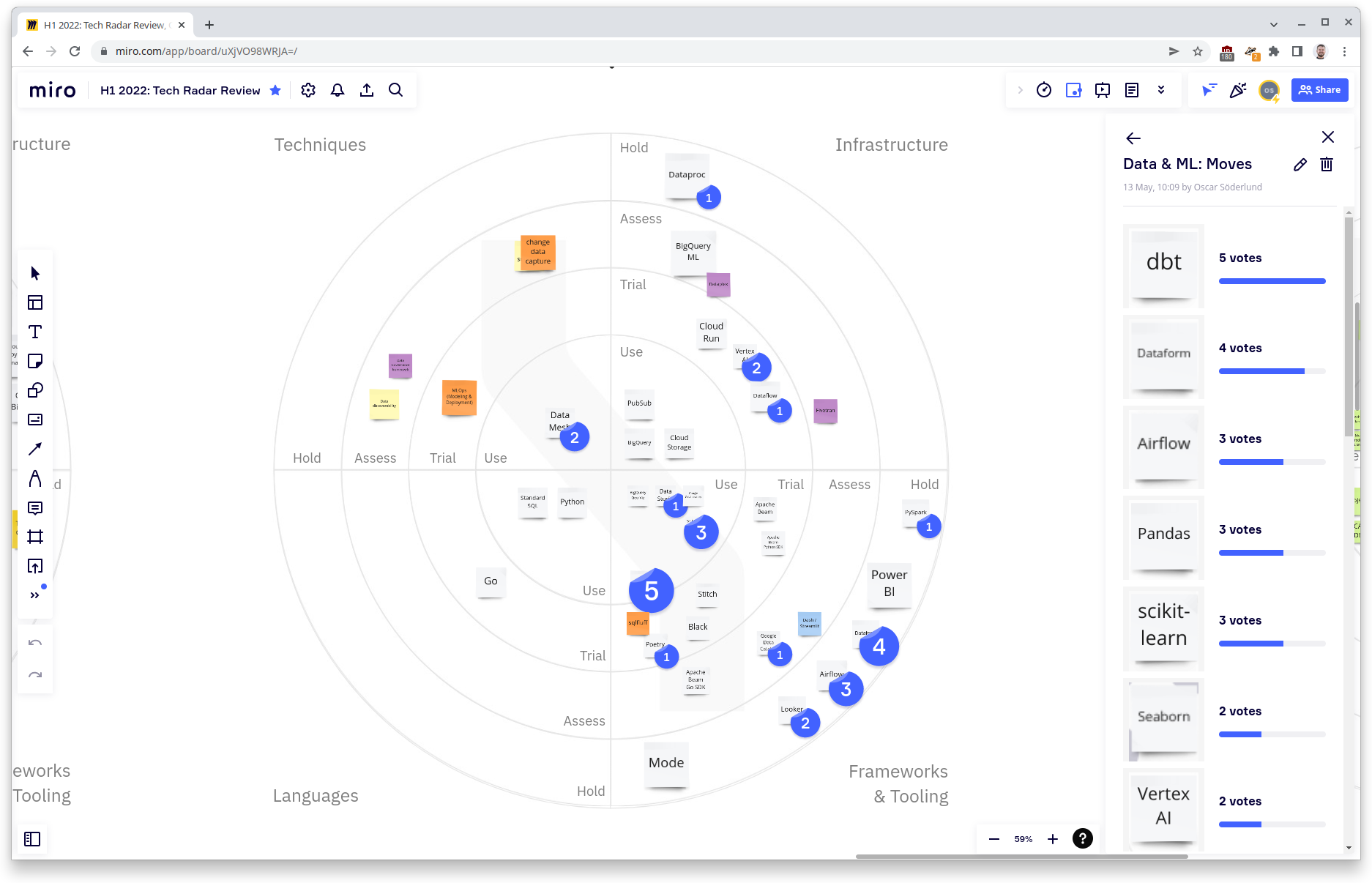It's tech radar review season!
· 11 min read
It's tech radar review season at Einride! That means each engineering guild facilitates a workshop to ensure that their tech radar is up to date, relevant and useful.
In this post we explain what a tech radar is, why having one or more tech radar is useful, and how we work with tech radars at Einride.
Want to know more? Read on!

